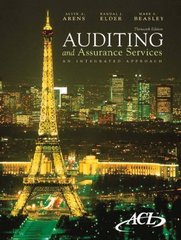
1. Which of the following is not a reason why a single set of high-quality international accounting standards would be beneficial? (a) Mergers and acquisition activity. (b) Financial markets. (c) Multinational corporations. (d) GAAP is widely considered to be a superior reporting system. 2. The Sarbanes-Oxley Act determines: (a) international tax regulations. (b) internal control standards as enforced by the IASB. (c) internal control standards of U.S. publicly traded companies. (d) U.S. tax regulations. 3. IFRS is considered to be more: (a) principles-based and less rules-based than GAAP. (b) rules-based and less principles-based than GAAP. (c) detailed than GAAP. (d) None of the above. 4. A company has purchased a tract of land and expects to build a production plant on the land in approximately 5 years. During the 5 years before construction, the land will be idle. Under IFRS, the land should be reported as: (a) land expense. (b) property, plant, and equipment (c) an intangible asset. (d) a long-term investment. 5. Current assets under IFRS are listed generally: (a) by importance. (b) in the reverse order of their expected conversion to cash. (c) by longevity (d) alphabetically, 8. Which statement is correct regarding IFRS? (a) IFRS reverses the rules of debits and credits, that is, debits are on the right and credits are on the left. (b) IFRS uses the same process for recording transactions as GAAP. (c) The chart of accounts under IFRS is different because revenues follow assets. (d) None of the above statements are correct. 9. The expanded accounting equation under IFRS is as follows: (a) Assets = Liabilities + Common Stock + Retained Earnings + Revenues - Expenses + Dividends. (b) Assets + Liabilities = Common Stock + Retained Earnings + Revenues - Expenses - Dividends. (c) Assets = Liabilities + Common Stock + Retained Earnings + Revenues - Expenses - Dividends. (d) Assets = Liabilities + Common Stock + Retained Earnings - Revenues - Expenses - Dividends. 10. A trial balance: (a) is the same under IFRS and GAAP. (b) proves that transactions are recorded correctly. (c) proves that all transactions have been recorded. (d) will not balance if a correct journal entry is posted twice. 11. One difference between IFRS and GAAP is that: (a) GAAP uses accrual-accounting concepts and IFRS uses primarily the cash basis of accounting (b) IFRS uses a different posting process than GAAP. (C) FRS uses more fair value measurements than GAAP








